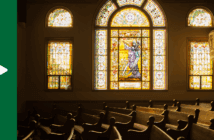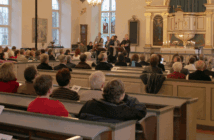![]()
 Download the 2025 Clergy Age Trends Report.
Download the 2025 Clergy Age Trends Report.
Highlights of the 2025 Report
Impact of Disaffiliation on Numbers and Ages of United Methodist Clergy
While there were clergy losses in all age groups caused by disaffiliation in each of the years between 2020 and 2024 (along with other factors always affecting losses such as deaths and retirements), the largest decline among elders, deacons, and local pastors came in 2024.
If we look only at declines since 2019, we can make these observations:
- Clergy losses were greatest among local pastors, especially among those under 35.
- The next largest losses came from elders, especially among those under 35.
- Fewer losses came among deacons with their greatest losses among the under 35.
- Among the age cohorts, the least decline came among clergy ages 35 to 54. In fact, deacons showed an increase in middle-age deacons.
However, when the clergy losses since 2019 are compared to the trends between 2010 and 2019, a slightly different picture appears. In those years leading up to 2019, the number of active elders had averaged a three percent decline annually. On the other hand, deacons and local pastors had increased their numbers each year modestly but consistently. Given these patterns going into disaffiliation, some of the elder losses may have happened anyway given factors at play prior to 2019; whereas the disaffiliation and conflict associated with it may have hampered the momentum of increasing numbers of deacons and local pastors prior to disaffiliation.
An important caveat must be noted regarding the higher losses since 2019 among young clergy—elders as well as deacons and local pastors: we do not know to what extent these losses came from the under-35 persons leaving the United Methodist Church or a decline in new young clergy entering as other young clergy are aging out of the under-35 cohort. A combination of the two factors is likely. It would be surprising if the sustained conflict, especially between 2019 and 2023, did not negatively influence younger people from entering such ministry.
Young Elder Decline Slows and Middle-Age Elders Increase Proportionally
The recent decline in the number of young elders (under 35) began in 2017 and followed modest gains after the low point of 2005. That decline continues; however, the scale of the decline increased dramatically beginning in 2019. Since the most recent decline began in 2019, there has been a decline of 62 percent in the number of under-35 elders. The losses have been greater among men than women based on the proportion of each among young elders, though not in the past year. The number of young elders in 2025 is 364, a loss of 34 in the past year. While this year sets a new record for the fewest young elders, this year’s numerical decline is the smallest in five years. Young elders continue to constitute about five percent of active elders.
Beginning in 2000, we saw a trend of fewer elders in the middle-age (35-54) group and more in the older (55-72) group. Despite a mandatory retirement age of 72, with most retiring before that age, the pool of older elders continued to grow for 20 years. For five years now, the trend has reversed—with a growing proportion of active elders aged 35-54 each year, reaching 46 percent in 2025, and lower proportions of older clergy more consistent with previous historical patterns.
Young Deacons Hold Steady as Young Local Pastors Decrease
The number and percentage of young deacons remained virtually unchanged in 2025. The percentage of young deacons continues to be higher than that of elders and local pastors.
![]()
 Download the 2025 Clergy Age Trends Report.
Download the 2025 Clergy Age Trends Report.
Previous Clergy Age Trends Reports
![]() 2024 | 2023 | 2022 | 2021 | 2020 | 2019 | 2018 | 2017 | 2016 | 2015 | 2014 | 2013 | 2012 | 2011 | 2010 | 2009 | 2008 | 2007 | 2006
2024 | 2023 | 2022 | 2021 | 2020 | 2019 | 2018 | 2017 | 2016 | 2015 | 2014 | 2013 | 2012 | 2011 | 2010 | 2009 | 2008 | 2007 | 2006




